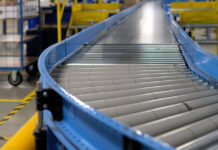By Diane Silcock
GLYPHOSATE, a toxic herbicide, introduced onto the market around five decades ago as a weed killer in agricultural farming, continues to attract much attention internationally.
Many environmental and agricultural, as well as health, organisations have called for an outright ban, with some countries having put in place total or partial bans, and for good reason.
Agricultural land is sprayed relentlessly, saturating and polluting the soil, the air and our waterways, adversely affecting the nutritional value of crops and the health of farmworkers and surrounding communities, animals, and aquatic life.
Research indicates that South Africa used an alarming 7 977 tons of Glyphosate in 2017 compared to the 3 721 tons in 2009, doubling its use in eight years, according to international market research company Kynetec.
This is likely due to the widespread adoption of genetically engineered crops that are resistant to the herbicide. Moreover, let’s not forget that the herbicide has been in use for around 50 years.
Globally, the figures are even more staggering. The overall global application of Glyphosate, for all purposes – both agricultural and non-agricultural – increased more than 12 times in two decades, from about 67 000 tons in 1995 to 826 000 tons in 2014.
A call to move from old technology to green technology
“Glyphosate is old technology,” says Burt Rodrigues, CEO of Biodx, a company harnessing the power of biotechnology.
“It’s a small molecule which, when formulated, can be toxic, taking up to 290 days to biodegrade. It gets through everything causing damage, much like microplastics. These conventional chemicals from the 50s to 70s have predominantly been hogging the market,” says Rodrigues.
“The regulatory body in Europe is encouraging manufacturers to develop green technology which could be anything from 30% to 50% more effective, however, there is a problem with virtue signalling, resulting in their apathy to take incremental steps to adopt new technologies.”
Rodrigues says: “The danger of using non-biodegradable products is the long-term impact it has on the land. Normal farming practices mean farmland is given rest periods to recover before new planting begins. This is when insects and bugs normally do their work on the land, which is essential to regain its health and nutrients. That is, if there are no pesticides and herbicides lingering in the soil. Without bacterial processing, the planet becomes dead rock and you have nothing. With Glyphosate in the soil, this is exactly what happens.”
Glyphosate’s threat to human health
Farmworkers are continually exposed to toxic herbicides and pesticides, often without protective clothing or adequate training, and widespread illiteracy means that label warnings go unnoticed.
Consumers are increasingly concerned about the nutritional value of food and are seeking organic alternatives and food supplements.
Yet, are they fully aware that what’s on their dinner plate could be making them sick? Cereals, especially oats, wheat, sugar, maize, fruit and vegetables, even meat, contain traces of Glyphosate and other poisonous substances.
The International Agency for Research on Cancer (IARC) classified Glyphosate as probably carcinogenic to humans; the herbicide moved from a possible carcinogen (Group 2B) to a probable (Group 2A) carcinogen.
The Cancer Association of South Africa supports research indicating that Glyphosate could be responsible (among others) for endocrine disruption, increased risk of cancer, particularly non-Hodgkin’s Lymphoma, and toxic changes to living cells. Other research links it to neurotoxicity, autism spectrum disorders in children exposed from prenatal age, even Parkinson’s disease.
CANSA advocates that planting of edible crops should only take place in soil which is totally free from any Glyphosate residue.
Sadly, this could take decades or even a lifetime, considering millions of litres of the herbicide has been sprayed liberally on agricultural land for around 50 years, plus the debate and push to ban it, rages on.
Regenerative South African farmer, Angus McIntosh, says, “Chemical-based agriculture is a modern aberration which really took hold post World War I and has since then captured academia and media to the extent that it is deemed conventional agriculture. The solution is to go back and embrace regenerative agriculture.”
With today’s modern technology and the research available, there is ample reason to switch to alternative solutions that will protect our environment, human and animal health. Let’s work with nature, not against it.















